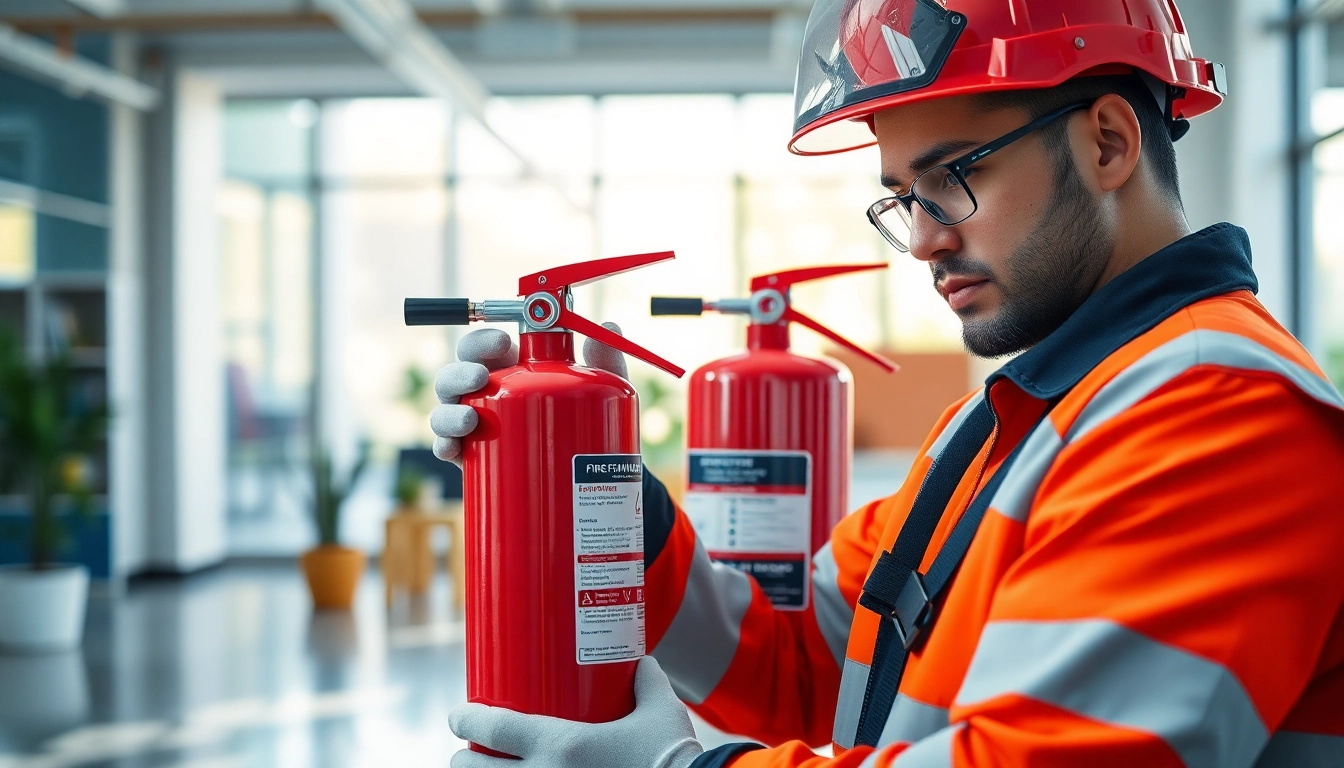Expert Fire Extinguisher Service: Ensuring Safety and Compliance
Understanding Fire Extinguisher Service
Fire safety is paramount in any setting, whether residential, commercial, or industrial. A crucial component of fire safety is the fire extinguisher service that ensures these life-saving devices are in optimal condition should an emergency arise. In this comprehensive guide, we will delve into the nuances of fire extinguisher services, from understanding their importance to choosing the right service provider and what costs to expect.
What is Fire Extinguisher Service?
Fire extinguisher service refers to the various maintenance tasks and inspections required to keep fire extinguishers functional and compliant with local regulations. This service includes routine inspections, refills, recharges, and testing to guarantee that extinguishers will operate effectively in an emergency. Understanding the components of fire extinguisher service is essential for maintaining safety standards in any environment.
Importance of Regular Maintenance
Regular maintenance of fire extinguishers is not just a matter of compliance; it’s a critical safety measure. Statistics indicate that improperly maintained extinguishers are ineffective in emergencies, potentially leading to devastating outcomes.
Some key reasons why regular maintenance is vital include:
- Ensures Functionality: Regular services ensure that extinguishers are fully charged, properly pressurized, and functioning as intended.
- Compliance with Regulations: Different localities and industries have specific fire safety regulations that require ongoing maintenance.
- Reduces Liability: Keeping extinguishers in good working order can help prevent accidents and mitigate liability in case of a fire.
Fire Extinguisher Types and Services Offered
There are several types of fire extinguishers, each designed to combat different kinds of fires. The primary types include:
- Water Extinguishers (Class A): Effective on ordinary combustibles such as wood and paper.
- Foam Extinguishers (Class B): Suitable for flammable liquids such as gasoline and oil.
- Dry Powder Extinguishers (Class ABC): Versatile extinguishers capable of addressing Class A, B, and C fires.
- Carbon Dioxide Extinguishers (Class B and C): Primarily used for electrical and flammable liquid fires.
- Wet Chemical Extinguishers (Class K): Recommended for kitchen fires involving cooking oils and fats.
Fire extinguisher services offered include:
- Routine Inspections and Maintenance
- Recharge Services
- Replacement of Expired Equipment
- Monthly and Annual Inspections
- Education and Training for Users
Key Maintenance Practices for Compliance
Inspection Requirements and Frequency
Inspection of fire extinguishers is essential for ensuring they are operational. The National Fire Protection Association (NFPA) outlines specific requirements for the inspection frequency:
- Monthly visual inspections by the owner or designated personnel.
- Annual professional inspections by a qualified technician.
- Six-year maintenance that includes detailed internal examination.
During these inspections, technicians will check the extinguisher for physical damage, pressure levels, and the condition of seals and hoses.
Testing Procedures for Fire Extinguishers
Testing fire extinguishers is not merely a formality; it is a serious procedure that assesses the functionality of each unit. Common testing procedures include:
- Hydrostatic Testing: This method involves pressurizing the extinguisher to check for leaks. It is typically required every five years.
- Pants/Discharge Tests: For understanding the effectiveness while in use, extinguishers should be discharged in controlled conditions to observe their operational performance.
- Recharge Tests: After extinguishing a fire or after using part of the contents, extinguishers must be recharged promptly by professionals.
Documentation and Compliance Standards
Proper documentation of inspections, maintenance, and tests is crucial for compliance with local fire codes and standards. This includes:
- Keeping written records of inspections and maintenance activities.
- Providing compliance tags that indicate the date of last inspection and next due date.
- Documenting any repairs or modifications made.
Choosing the Right Fire Extinguisher Service Provider
Evaluating Experience and Qualifications
When selecting a fire extinguisher service provider, evaluating their experience and qualifications is paramount. Look for:
- Certifications such as those from the NFPA or State Fire Marshal.
- Years of experience in the fire safety industry.
- References and proven track records with other businesses or residential properties.
Service Options: Inspections, Recharges, and More
Assess the range of services your provider offers. Comprehensive services such as:
- Inspection schedules that meet your specific needs.
- Emergency recharge services to minimize downtime.
- Training programs for staff or residents on proper usage of extinguishers.
Customer Reviews and Reputation
Researching customer reviews can provide insight into the reputation and reliability of service providers. Look for:
- Testimonials on their website and third-party review sites.
- Feedback on response times and service quality.
- Overall satisfaction levels from previous customers.
Cost Factors for Fire Extinguisher Services
Understanding Pricing Models
The cost of fire extinguisher services varies based on several factors, including:
- Type and number of extinguishers serviced.
- The complexity of the inspection required.
- Frequency of service agreements.
Average Costs for Various Services
Here’s an overview of the average costs associated with different fire extinguisher services:
- Monthly inspection: typically ranges from $15 to $30 per extinguisher.
- Annual inspection: generally $75 to $150 for a standard extinguisher.
- Recharge service: usually between $20 and $50.
Budgeting for Fire Safety Compliance
Budgeting for fire extinguisher services should be a critical aspect of fire safety planning. Consider setting aside funds regularly to cover the costs associated with inspections, maintenance, and necessary updates to your fire safety equipment.
Future Trends in Fire Safety and Extinguisher Services
Technological Innovations in Fire Extinguishers
Technology is continually transforming the fire safety industry. Innovations include:
- Smart Extinguishers: These units may come with monitoring features to notify owners when maintenance is due.
- Advanced Materials: Using lighter and more durable materials that improve performance.
- Integrated Systems: Fire extinguishers connected to building management systems for enhanced safety operations.
Industry Enhancements in Service Standards
As the fire safety industry evolves, so too do the standards and practices surrounding fire extinguisher services. Keeping abreast of changes in legislation can help businesses maintain compliance and ensure safety.
Global Regulations Impacting Fire Safety Services
Fire safety regulations are becoming more stringent in many regions across the globe. Understanding these changes can prepare business owners to adapt their fire safety measures accordingly. Common regulatory updates often involve:
- Increased requirements for training staff on fire safety.
- More rigorous inspection and documentation requirements.
- Local ordinances requiring specific types of extinguishers in various settings.
In conclusion, investing in fire extinguisher service ensures not just compliance but also contributes to the overall safety of your environment, protecting lives and properties from the devastating potential of fires. Regular maintenance, proper education on usage, and staying informed about new technologies and regulations are essential to an effective fire safety plan.














Post Comment